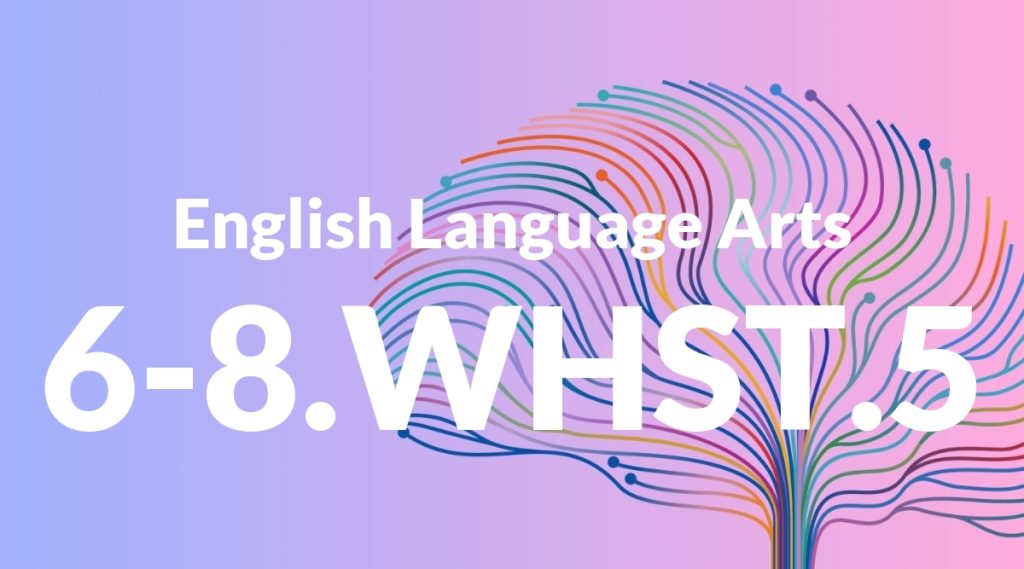Standard: 6-8.WHST.5 – With some guidance and support from peers and adults, develop and strengthen writing as needed by planning, revising, editing, rewriting, or trying a new approach, focusing on how well purpose and audience have been addressed.
Grade level: Grade 6-8
Subject: English Language Arts
Domain: Writing: History, Science & Technical Subjects
Teacher Overview
This standard emphasizes the importance of the writing process, including planning, revising, editing, and rewriting. It highlights the need for students to consider their purpose and audience in their writing. Mastery of this standard will help students produce well-organized and clear texts, essential for effective communication in various subjects. Students should have a basic understanding of the writing process and be familiar with the concepts of audience and purpose. They should also have some experience with peer review and receiving feedback.
Upon mastering this standard, students will be able to independently apply advanced writing techniques and provide constructive feedback to peers, enhancing their overall communication skills.
Common Misconception 1
Some students may believe that once they have written a draft, their work is complete. This misconception overlooks the importance of revising and refining their writing to improve clarity and effectiveness.
Intervention 1
Implement peer review sessions where students exchange drafts and provide constructive feedback. Emphasize the iterative nature of writing and the value of multiple revisions.
Common Misconception 2
Another common misconception is that editing only involves correcting grammar and spelling errors. This view neglects the importance of structural and content-related revisions.
Intervention 2
Provide examples of substantive edits that improve the overall quality of a text. Teach students to evaluate their work for coherence, flow, and argument strength, in addition to surface-level errors.
Prerequisite Knowledge
Students should have a basic understanding of the writing process, including drafting, revising, and editing. They should also be familiar with the concepts of audience and purpose in writing.
Subsequent Knowledge
After mastering this standard, students will be able to independently apply advanced writing techniques to various types of texts, ensuring clarity and effectiveness in communication. They will also be able to provide constructive feedback to peers.
Instructional Activities
- Conducting peer review workshops
- Engaging in guided writing sessions with teacher feedback
- Using graphic organizers for planning writing
- Participating in writing circles for collaborative revisions
- Analyzing and revising sample texts




